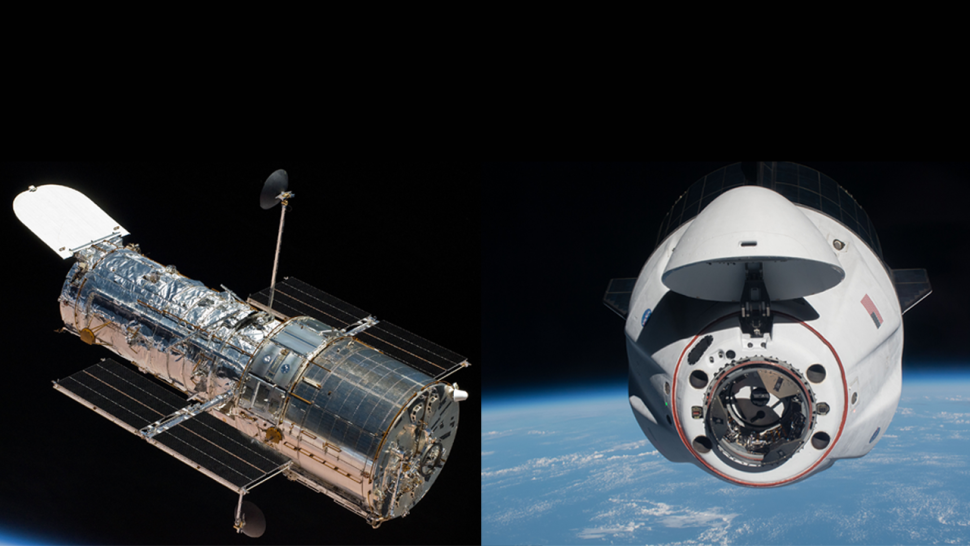31.12.2022
A study by SpaceX to use private spacecraft to reboost the Hubble Space Telescope has NASA weighing options to give Hubble new life.

NASA is looking deeper into the possibility of using a private spacecraft to lift the Hubble Space Telescope to new heights, giving the influential space observatory a new lease on life.
On Dec. 22, the space agency issued a Request for Information regarding a non-exclusive SpaceX study earlier this year that suggested how the Hubble Space Telescope could be "reboosted" into a higher orbit.
NASA's request for information, which you can read here, comes as it continues to consider the space telescope's future and will remain open until Jan. 24, 2023.
Since the start of Hubble's operations in 1990, the orbit of the space telescope 335 miles (540 kilometers) above Earth has been decaying. Reboosting it to an orbit that is both higher and more stable could add years to Hubble’s operating lifetime delaying the point at which NASA must deorbit or dispose of the telescope.
During its five space shuttle missions to the service Hubble, NASA used the shuttle to reboost the telescope. The last shuttle servicing mission to Hubble was in 2009. NASA retired its shuttle fleet in 2011.
The idea to raise Hubble to a higher orbit using a Dragon spacecraft at no cost to the government was first developed between SpaceX and Polaris Program, a private program of space missions using SpaceX's Dragon and Starship vehicles funded by billionaire Jared Isaacman. The unfunded agreement between SpaceX and NASA to study the feasibility of reboosting Hubble was then signed in September 2022.
The SpaceX study was designed to help NASA, which currently has no plans to operate or fund a new Hubble servicing mission, determine the commercial possibility of such a mission. The SpaceX study also aimed to lay out the technical challenges of such a servicing endeavor.
The fact the study is non-exclusive means that other companies are free to propose their own Hubble servicing studies based on the use of different rockets or spacecraft.
These studies will collect data from Hubble itself and from SpaceX's Dragon spacecraft to assess the possibility of safely rendezvousing and docking with the space telescope before shunting it to a higher stable orbit. The studies are expected to take around 6 months to complete.
"This study is an exciting example of the innovative approaches NASA is exploring through private-public partnerships,” associate administrator for the Science Mission Directorate at NASA Headquarters in Washington, Thomas Zurbuchen, said in a statement.(opens in new tab) "As our fleet grows, we want to explore a wide range of opportunities to support the most robust, superlative science missions possible."
The operation to reboost Hubble would demonstrate how older satellites and spacecraft could be given extended operating lives, especially those in near-Earth orbits like the space telescope.
"SpaceX and the Polaris Program want to expand the boundaries of current technology and explore how commercial partnerships can creatively solve challenging complex problems," said Jessica Jensen, vice president of Customer Operations & Integration at SpaceX. "Missions such as servicing Hubble would help us expand space capabilities to ultimately help all of us achieve our goals of becoming a space-faring, multiplanetary civilization."
Quelle: SC

